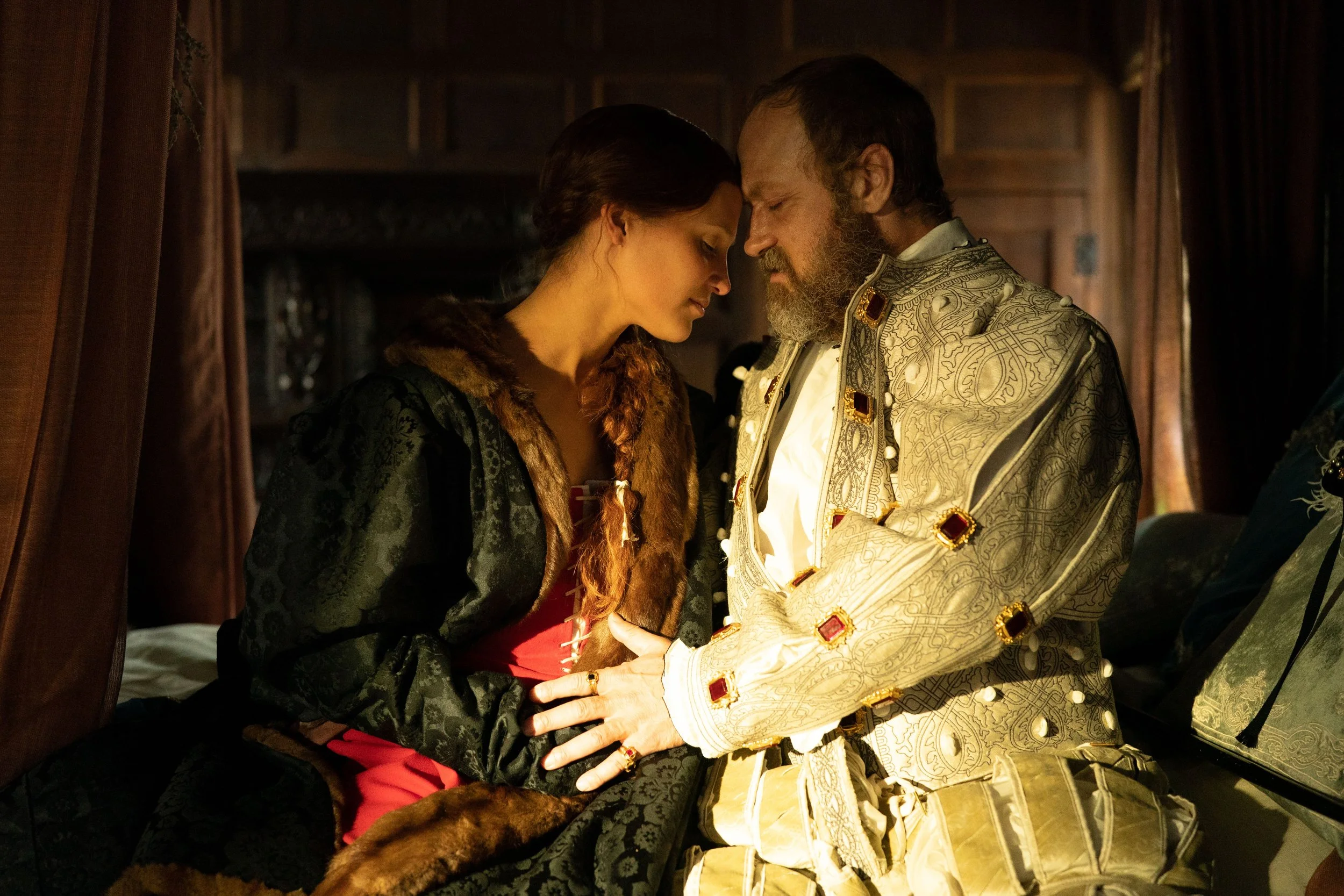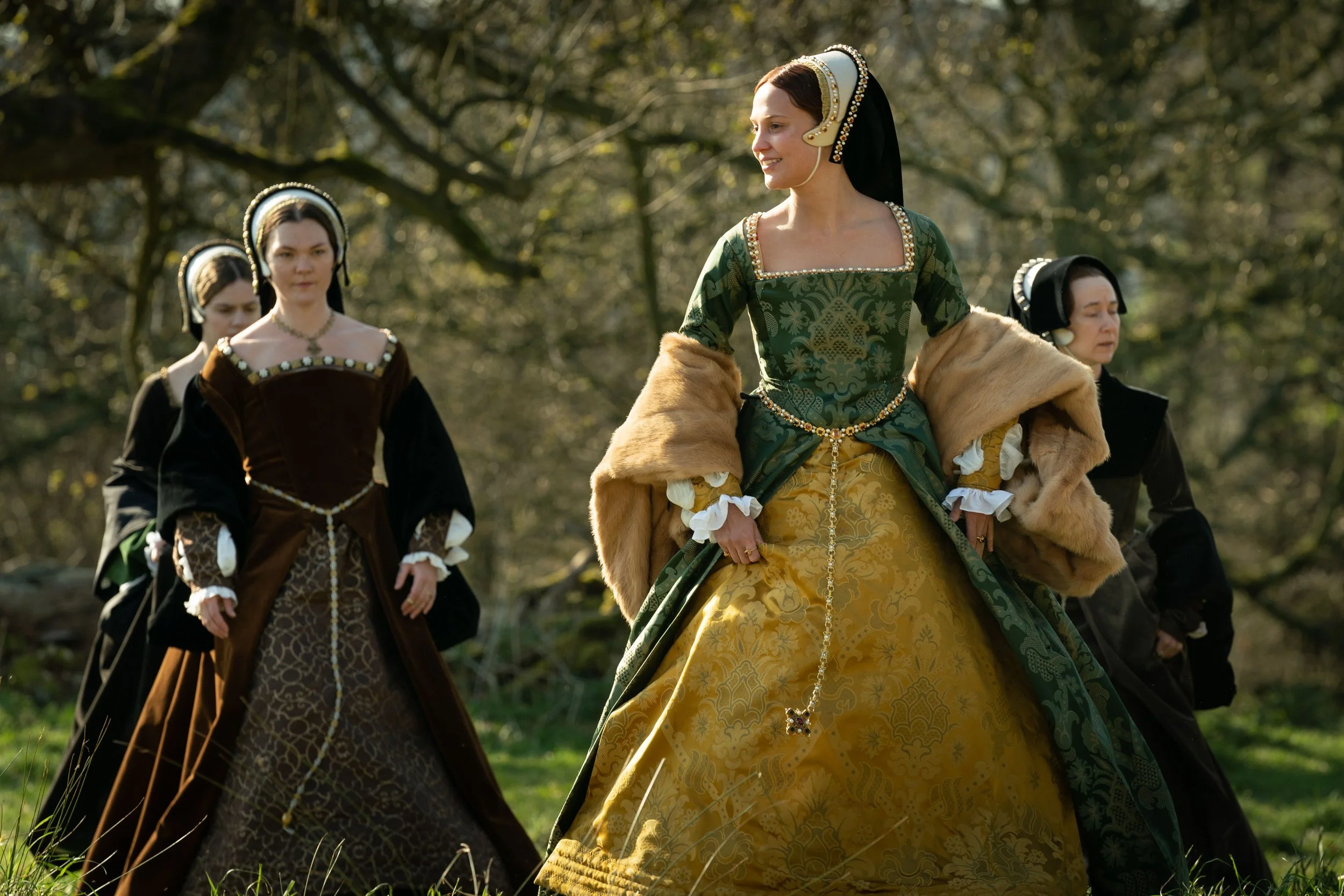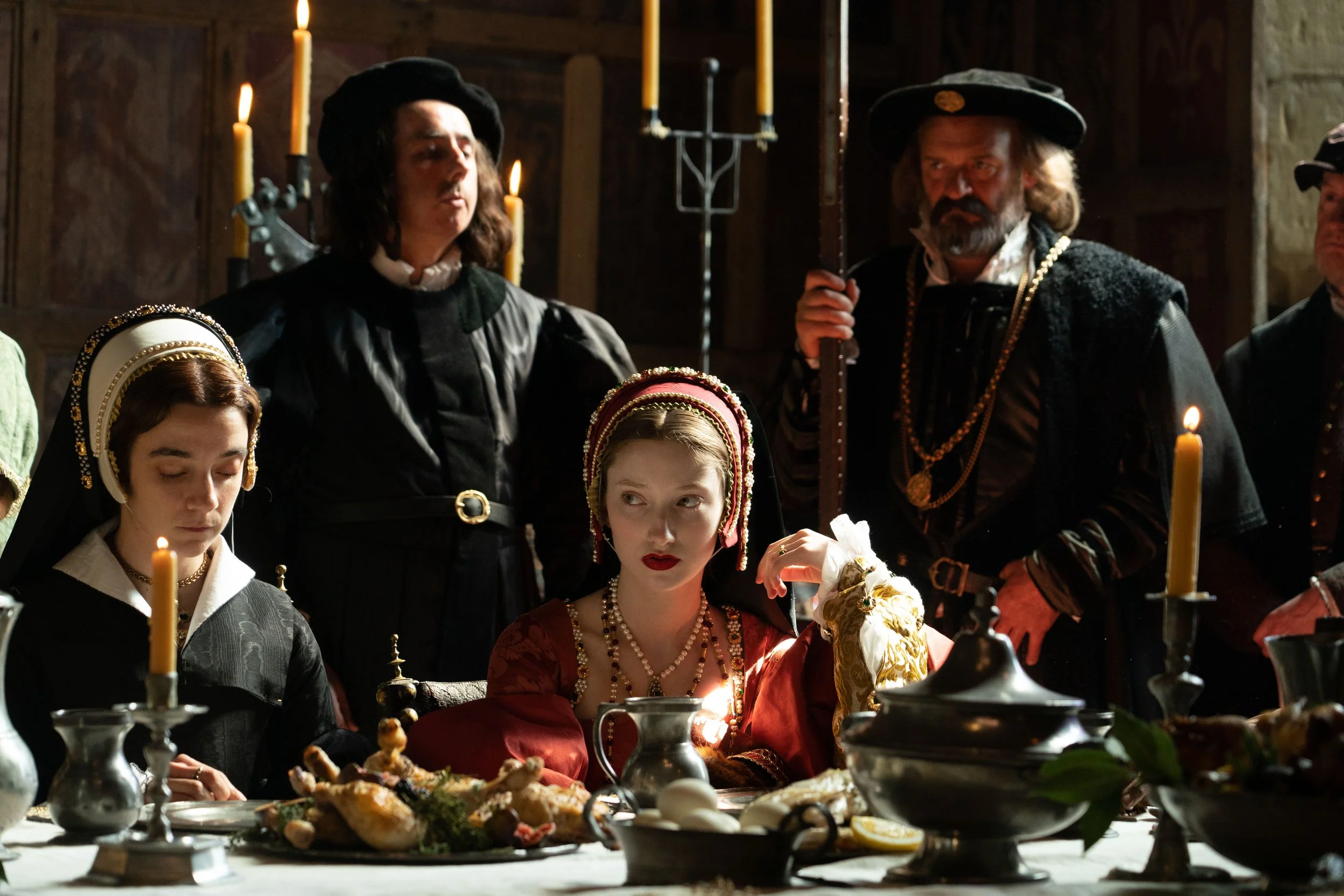‘Firebrand’ Review: Alicia Vikander Goes Fully Tudor as Katherine Parr in This Gorgeously Crafted but Predictable Period Thriller
Courtesy of Roadside Attractions.
“Divorced, Beheaded, Died: Divorced, Beheaded, Survived.” Over the years, this rhyme has been used as a learning tool for recalling the infamous Tudor King Henry VIII’s roster of wives. Henry VIII’s commemoration within the fabric of Western history has always been much more closely tied to his unpredictable personality and the monumental religious schisms he brought to England, with many historians failing to delve into the dramatic and perilous accounts of the many wives who were crushed under the king’s immense power. With Firebrand, the English-language feature debut from Karim Aïnouz, the Algerian-Brazillian filmmaker delves into the largely overlooked account of Katherine Parr, Henry VIII’s final wife, who (as the jingle indicates) managed to outlive her tempestuous and conniving husband. Adapted from a 2012 novel by Elizabeth Fremantle, titled The Queen’s Gambit, Firebrand delves into the harrowing maneuvers Katherine made to ensure her survival, although with some narrative liberties that revise her experience with much dramatic flair. Sumptuously attractive in its design and performance, Firebrand works as a totally acceptable period thriller. Still, it lacks the fresh perspective to instill anything particularly riveting into a storytelling structure that has been seen onscreen time and time again.
Firebrand takes us back to the dreary late winter countrysides of Tudor England, where queen consort Katherine Parr (Oscar winner Alicia Vikander) serves as regent while her husband, King Henry VIII (Jude Law), oversees his military in France. In her king’s absence, Katherine commands with control, successfully navigating Henry’s male-dominated court and publishing her writings on the newly introduced Protestantism that has swept across England. When Katherine learns of Henry’s impending return, she hurries away to warn a group of nearby radical Protestants, led by her friend and former lady-in-waiting, Anne Askew (Erin Doherty), since the king’s convoluted Protestant reforms saw the persecution of the most progressive believers. King Henry comes back, bringing with him an explosive attitude and the stench of pus, thanks to a horseback riding accident some ten years before that has caused severe infection in his leg. Katherine juggles the anxieties of her position, trying to conceive an heir to the throne while remaining devoted to her Protestant convictions, which are increasingly a point of tension between her and Henry. As Katherine becomes linked to Anne, who the king has deemed a heretic that should burn at the stake, Firebrand transforms into a period potboiler, a story of life or death for Katherine as she goes to revolutionary lengths to hold onto authority within a system working against her.
Courtesy of Roadside Attractions.
For his first English-language movie, Aïnouz managed to assemble a top-notch leading cast for Firebrand. Vikander brings her background as a dancer and frequent face seen in other period works to instill control and stoicism to her turn as Katherine Parr, despite the character’s tumultuous uncertainty in her day-to-day life. Vikander delivers energy to the role that absolutely reflects the righteous, defiant, and caring figure that the historical records describe Katherine as. This dynamism is showcased through Vikander’s commitment to portraying Katherine as a woman whose thought process was always one step ahead, necessitated by the unpredictability of Henry VIII. Speaking of Henry, Law embodies his performance as the Tudor king with a repulsive characterization unbelievably far from the suave, sexy identity that has underscored most of the actor’s long-spanning career. As King Henry, Law is a screaming, grunting bestial creature riddled with intense narcissism, paranoia, and physical pain. Sporting a leg swollen to twice its normal size, Henry hobbles about his castle with increasing madness, disgusting both his wife and children with his heartless conduct and a putrid stench. Through his take on Henry’s uncontrollable egomania, Law’s interpretation of the infamous ruler is much more aligned with the contemporary reputation of the king and his violent disposition.
Aïnouz works to promote the overlooked legacies of Henry VIII’s wives, who—outside of Anne Boleyn—have mainly been relegated to the forgotten annals of history. Firebrand places importance on the bonds created between women in the Tudor court, showcased by the film’s depictions of the connection between Katherine and the young Elizabeth I and her lady servants, finding in one another a sense of safety absent from the overwhelmingly male authority of the era. The palpable sense of mortal danger experienced by the female characters in Firebrand speaks directly to the treatment of women during the 16th century, who could be merely labeled as heretics for possessing any sense of individuality or alternative beliefs that detoured from the patriarchal institutions of the times. As with Aïnouz’s 2019 Cannes-winning feature, The Invisible Life of Eurídice Gusmão, the director approaches the female characters of Firebrand with great respect and compassion, particularly concerning women’s experiences from the past.
While Firebrand paints multi-faceted depictions of women ––sometimes absent from sources of the early modern period––the film enters murky waters in its attempts to portray Katherine’s relationship with motherhood. Possibly due to its literary source material, the movie emphasizes an imagined pressure Katherine felt to produce a spare heir for the Tudor throne when, in fact, Henry was presumably impotent and already suffering from ill health once he married Katherine. Henry had three possible heirs by this time in his life and was compelled to marry Katherine as more of an intellectual companion and caregiver rather than a producer of offspring. While cinema is in no way held to the standard of delivering cold, hard truths, Firebrand’s inclusion of this suspenseful race for Katherine to fall pregnant and perform her duties as a woman feels somewhat predictable based on how women are typically understood in other historical dramas. With Katherine’s real-life experience as a spirited religious reformer and even England’s first published woman (in the English language), Firebrand’s emphasis on this subplot of her struggles to conceive feels much less intriguing or fresh. However, the close relationships that Katherine forms with her stepchildren Edward VI, Elizabeth I, and Mary I are authentic and add a sentimental warmth that breaks up the movie’s ticking time bomb narrative evolution.
Courtesy of Roadside Attractions.
Known for his distinctive visual sensibilities, Aïnouz and his creative collaborators construct Firebrand with a unique hand that captures both the beauty and the savagery of Henry VIII’s court. Sprawling visions of the untouched English countryside are cast with the weak, watery sunlight of late winter, emphasizing the verdant fields and the fresh, chilly air. In contrast, the real-life castle where the film was shot, Haddon Hall, is illuminated with candlelight in a manner that accentuates the impenetrable stone walls and shadowy corners of the castle, creating a sense of claustrophobia as Katherine navigates its labyrinthic corridors and shady characters. Firebrand’s impressive production design captures the Tudor excesses of luminous jewelry, extravagant furs, and richly colored velvets but does not shy away from the coarseness of an era that saw the second wave of the Black Plague and a ruler whose leg excreted infectious discharge for a decade. This attention to historical detail serves as one of the movie’s most rewarding elements, setting it apart from the scrubbed-clean historical interpretations of the Tudor Period produced by Hollywood for many years. Cinematographer Hélène Louvart (who also shot Aïnouz’s recent Cannes title, Motel Destino) instills her feeling for naturalistic choreography of the camera into every frame of Firebrand, giving the camera the freedom to move around the castle and landscapes while also capturing graceful mise en scène reminiscent of the British paintings from the era.
Excellent in performance and craft and acceptable in its storytelling, Firebrand is an adequately entertaining period thriller that is fully capable of finding fans among viewers who are drawn to historical dramas. If this film were released twenty years ago, it would likely see much commercial success, but with the unfortunate state of the contemporary box office, Firebrand’s rather run-of-the-mill, unsurprising narrative might not be enough for it to make a splash in theaters, despite its serious star power. Nonetheless, the movie serves as a respectable English language debut for its director, whose international notoriety is growing: Aïnouz’s next English language project, Rosebushpruning, has already announced the casting of Elle Fanning, Josh O’Connor, and Kristen Stewart.
3.5/5
Firebrand premiered In Competition at the Cannes Film Festival in 2023. Roadside Attractions will distribute it in the United States, and it will hit theaters on Friday, June 14. Click here to find a screening near you.


